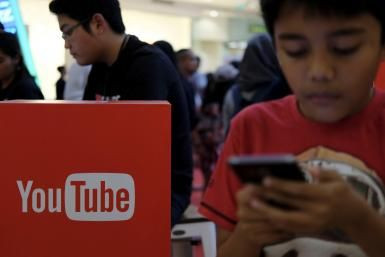YouTube Disables Monetization On Offensive Videos

YouTube aanounced its effort to act against hate speech and racist videos on its platform on Thursday but rather than censoring them in any way, the company has banned content classified ‘hateful’ from earning money using its advertising network.
“We’ve heard loud and clear from the creator community and from advertisers that YouTube needs to broaden our advertiser-friendly guidelines around a few additional types of content,” Ariel Bardin, YouTube vice president of product management, wrote in a post on the YouTube blog.
Read: Live Streaming: You Can Now Use The YouTube TV iOS App To Stream Live TV Via AirPlay
The company had problems recently with controversial content posted on its platform, when a large chunk of advertisers stopped pulled out due to their ads being placed before racist content and hate speech.
In his blog post, Bardin stated this endeavor is a part of YouTube’s efforts to restore advertisers’ confidence. YouTube has also updated its advertiser guidelines to provide advertisers a more detailed view of how their ads would be placed. The company says working on the correct placement will be a regular work-in-progress.
Here’s what the new guidelines state about the platform’s tougher positioning on offensive content:
Hateful content: Content that promotes discrimination or disparages or humiliates an individual or group of people on the basis of the individual’s or group’s race, ethnicity, or ethnic origin, nationality, religion, disability, age, veteran status, sexual orientation, gender identity, or other characteristic associated with systematic discrimination or marginalization.
Inappropriate use of family entertainment characters: Content that depicts family entertainment characters engaged in violent, sexual, vile, or otherwise inappropriate behavior, even if done for comedic or satirical purposes.
Incendiary and demeaning content: Content that is gratuitously incendiary, inflammatory, or demeaning. For example, video content that uses gratuitously disrespectful language that shames or insults an individual or group.
Furthermore, the post says even if a video is approved for ads, it might not be suitable for some brands while other brands’ advertisements might be placed on the said video. The company has issued a new course in its Creator Academy to help creators produce content, which would appeal to a broader audience. Rather than censoring online content, YouTube is actually trying to push creators towards creating content that appeals to advertisers, which in turn makes the platform and the creator monetize better.
That being said, YouTube classification of videos as controversial has itself caused issues in the past. Many creators have complained in the past about YouTube’s classification of their videos as controversial. The fact remains that on platform as big as YouTube, it would be impossible to scan each and every video properly for content. Unlike text, videos cannot be scanned using artificial intelligence based modules for content. This creators a quagmire for YouTube, which wants to maintain its advertiser-based monetization system.
© Copyright IBTimes 2024. All rights reserved.





















